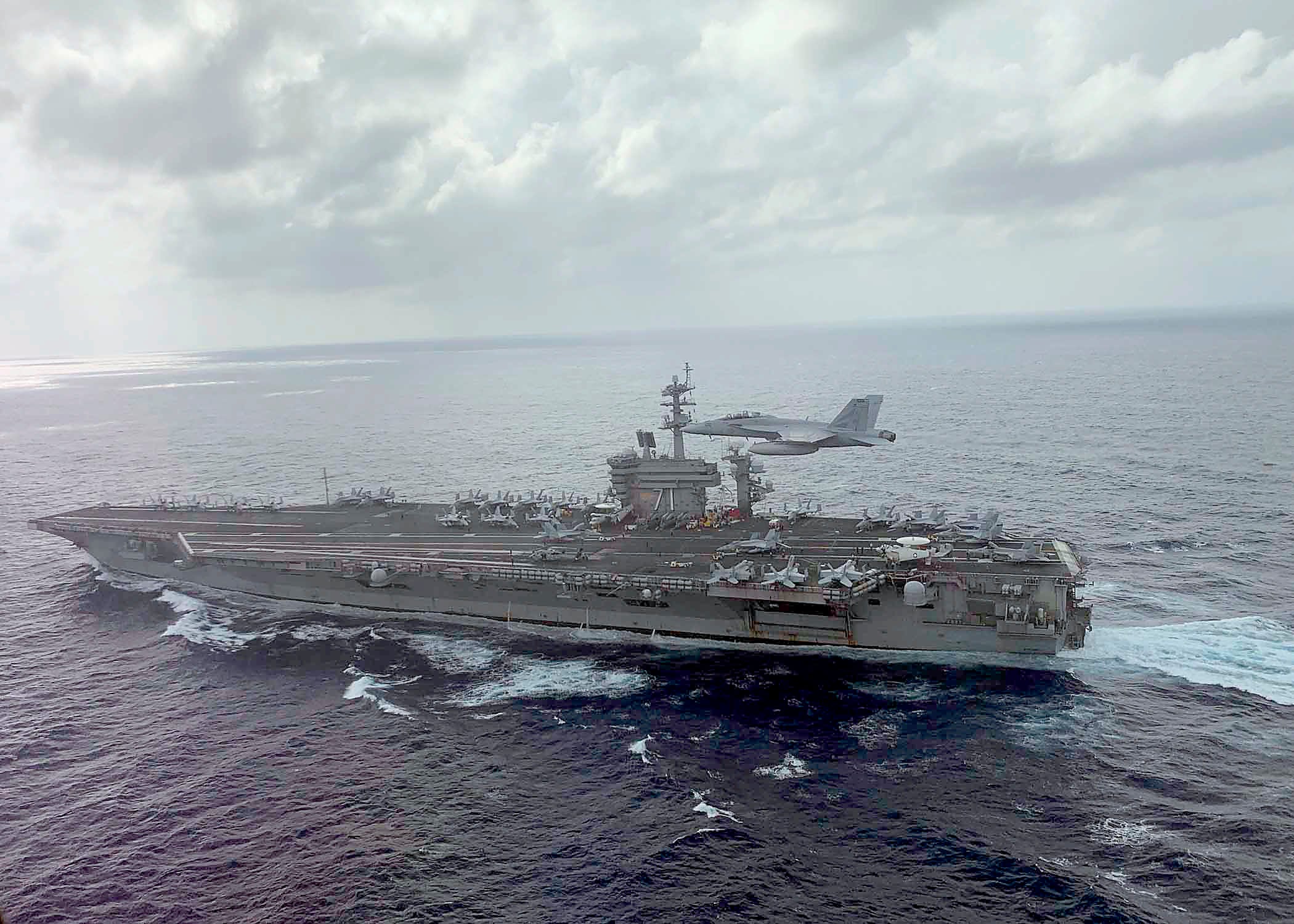The Navy’s senior leadership was aware of both the COVID-19 outbreak onboard the aircraft carrier Theodore Roosevelt and the concern about properly isolating sailors well before the ship’s commanding officer, Capt. Brett Crozier, sent a letter Monday up his chain of command sounding the alarm, the Navy’s top admiral told reporters Wednesday.
The letter was most likely the result of a misunderstanding about how quickly the process would move, Chief of Naval Operations Adm. Mike Gilday told reporters. It was first leaked to the San Francisco Chronicle and quickly gained national attention ― a sort of canary in the coal mine for what the military is facing as coronavirus spreads throughout an organization whose members live in close quarters and one that can ill afford to sideline a significant percentage its personnel.
“Let me emphasize that this is exactly what we want our commanding officers, our medical teams, to do,” acting Navy Secretary Thomas Modly said, though he later lamented that the letter went public.
There had been a plan in place to begin moving sailors off the ship, Gilday said, but Crozier wanted it done more quickly than leadership was comfortable with.
RELATED

In a Tuesday appearance on CBS News Defense Secretary Mark Esper said he did not believe the Roosevelt needed to be evacuated, but acknowledged the remaining carrier fleet could fill in if it did end up sidelined.
“I have not had a chance to read that letter, read it in detail," Esper said. "Again, I’m going to rely on the Navy chain of command to go out there to assess the situation and make sure they provide the captain and the crew all the support they need to get the sailors healthy.”
Modly and Esper discussed the issue yesterday, Modly told Military Times.
“Maybe there’s a terminology issue in terms of what he thinks evacuation is and what we’re doing,” Modly said.
As of Wednesday, a thousand of the ship’s 4,800-sailor crew have disembarked and are being isolated in facilities on Guam’s U.S. Air Force and Navy bases.
Local commanders are also working with the territory’s governor to coordinate hotel space for sailors to stay isolated under the single-occupancy, single-restroom standards the Centers for Disease Control and Prevention recommends.
In the meantime, nearly a quarter of the ship’s sailors have been tested for COVID-19, and deep-cleaning protocols are in place to protect those who are still aboard.
“One thing I want to emphasize is we cannot and will not move all of the sailors off the ship,” Modly said. “It’s important to understand that just because it’s big and it floats and it has lots of people on it, the comparison to a cruise ship pretty much ends there.”
A skeleton crew of hundreds will have to stay on board, he explained, not only to maintain the ship’s nuclear reactor, but to protect the carrier’s weapons and other systems.
“Taking the sailors off the ship does not make them safer,” he said, adding that Crozier’s manning proposal was too low.
“I don’t believe we can do it with 10 percent.”
But Crozier’s most cutting critique came at the end of his letter, when he warned that if the Navy didn’t take immediate action, it would be failing to protect sailors.
“My response to that is it’s disappointing to have him say that,” Modly said. “However, at the same time, I know that’s not the truth.”
A memo went out to commanding officers Tuesday night, Gilday said, reiterating that it’s their job to identify issues in their formations and reach out to higher commands if they need assistance.
“You can’t execute those missions properly unless you have healthy crews,” Gilday said.
Of 94 ships currently underway, Modly said, the Theodore Roosevelt is the only one with active coronavirus cases on board.
As a precaution, some port visits and exercises have been adjusted or canceled, and senior leadership is looking at how slowing down will effect future training and deployment cycles.
Meghann Myers is the Pentagon bureau chief at Military Times. She covers operations, policy, personnel, leadership and other issues affecting service members.





